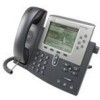Cisco 7962G Administration Guide - Page 189
DNS Server 1-5, Default Router 1-5
 |
UPC - 882658140341
View all Cisco 7962G manuals
Add to My Manuals
Save this manual to your list of manuals |
Page 189 highlights
Index about 4-5 displaying 4-2 editing values 4-3 locking options 4-3 options Admin. VLAN ID 4-8 Alternate TFTP 4-8 BOOTP Server 4-5 CDP on PC port 4-24, 8-8, 9-12 CDP on switch port 4-24, 8-8 Default Router 1-5 4-7 DHCP Address Released 4-8 DHCP Enabled 4-8 DHCP Server 4-5 DNS Server 1-5 4-7 Domain Name 4-6 Host Name 4-6 IP Address 4-6 MAC Address 4-6 Operational VLAN ID 4-7 PC Port Configuration 4-9 Subnet Mask 4-6 SW Port Configuration 4-8 TFTP Server 1 4-6 TFTP Server 2 4-7 overview 4-1 unlocking options 4-3 Network Configuration web page 8-2, 8-5 network connections, access port 3-4 network connectivity, verifying 9-3 networking protocol 802.1X 1-5 BootP 1-4 CDP 1-4 CPPDP 1-5 DHCP 1-4 HTTP 1-4 IP 1-5 RTCP 1-6 RTP 1-5 SCCP 1-6 SIP 1-6 TCP 1-6 TFTP 1-6 TLS 1-6 UDP 1-6 Network Locale 4-16 Network Locale Version 4-16 network outages, identifying 9-7 network port configuring 4-8 connecting to 3-7 network requirements, for installing 3-1 network statistics 7-9, 8-9 Network Statistics screen 7-9 Network web page 8-2, 8-9 O on hook call transfer 5-9 Operational VLAN ID 4-7 other group pickup 5-9 P padlock icon 4-3 PCM file requirements, for custom ring types 6-3 PC port LLDP 4-25, 8-8 PC Port Configuration 4-9 PC Port Disabled 4-21 Peer firmware sharing 4-25, 9-12 personal directories, configuring 5-13 personal directory B-4 phone button templates 5-13 phone hardening 1-12 phone lines, buttons for 1-3 OL-14625-01 Cisco Unified IP Phone 7962G and 7942G Administration Guide for Cisco Unified Communications Manager 6.1 IN-7















